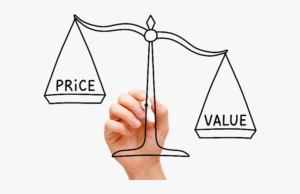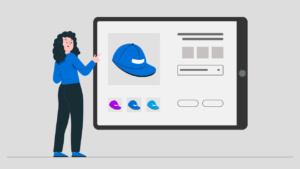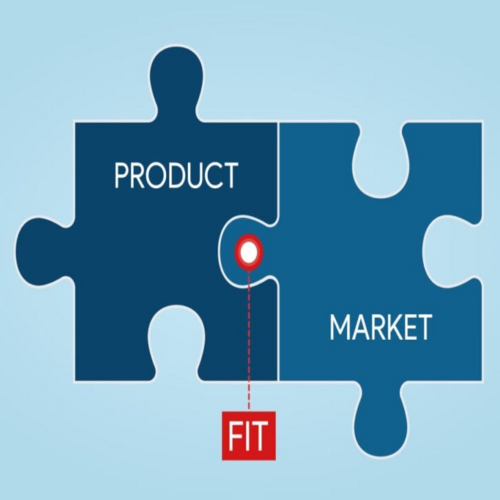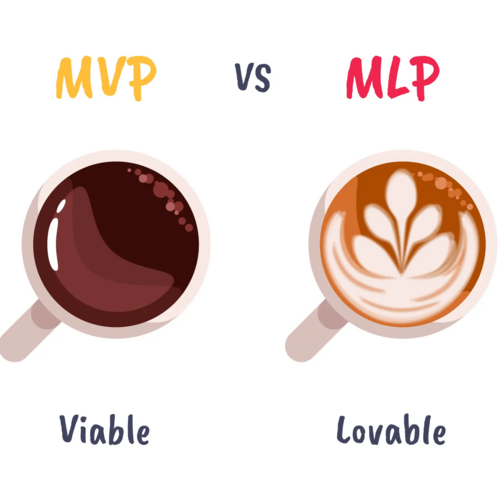Product differentiation strategy is an approach that aims to set a company’s products or services apart from its competitors. The goal is to create a unique selling proposition that can help the company attract and retain customers.
Importance of Product Differentiation
Product differentiation is critical for companies that want to stand out in a crowded market. When products and services are similar, it becomes challenging for customers to make a decision. Therefore, by differentiating its products, a company can provide customers with a compelling reason to choose its product over the competition. So, overall, it helps increase sales, market share, brand loyalty, and also profitability.
Product differentiation is also essential for pricing strategies. When a product is perceived to have unique value, customers are often willing to pay a higher price. This allows companies to charge a premium for their products and services and increase their profit margins.
How should I differentiate my product?
There is something that you need to understand before looking into differentiating a product.
1) Understand Your Target Market and focus on a specific audience
The first step in differentiating your product is to understand your target market. Identify the needs, preferences, and behaviors of your customers. This can be done through market research, surveys, and focus groups. Once you have a better understanding of your specific audience group, you can tailor your product to meet their needs.
2) Analyze Your Competitors
To differentiate your product, you need to have a clear understanding of your competitors. Analyze their products, pricing, marketing strategies, and customer base. This will help you identify areas where you can differentiate your product.
There will be so many other factors to look into, but these are the basics. Once you have a thorough idea of your target customers, their needs, and your competitors, here are some of the ways you can differentiate your product.
Product Differentiation Strategies
Features
One way to differentiate a product is by offering unique features that competitors do not have.

- Functional features: These are features that directly relate to the product’s function or purpose. For example, a fitness tracker may have unique features like heart rate monitoring, step tracking, and workout tracking that competitors don’t offer.
- Design features: Design features relate to the physical appearance or user interface of the product. This could include a unique color scheme, a distinct shape or form factor, or an intuitive and user-friendly interface.
- Technological features: Technological features refer to unique or advanced technology that the product uses, such as a proprietary algorithm, a patented manufacturing process, or cutting-edge sensors or components.
- Service features: Service features relate to the post-sale support or services that come with the product. This could include customer support, warranty or repair services, or access to exclusive content or events.
Price

Product differentiation can be achieved by pricing the product differently than competitors. One way to do this is by offering a product at a different price point than competitors. Companies can offer a lower price to attract price-sensitive customers or a higher price to indicate a premium product. For example, budget airlines differentiate themselves from traditional airlines by offering lower prices to attract customers who prioritize affordability over amenities. On the other hand, luxury brands differentiate themselves by offering products at higher price points, which suggests exclusivity and superior quality. By pricing their products differently, companies can target specific customer segments and differentiate themselves from competitors in the market.
Quality
Product quality is a powerful differentiation strategy that can help companies set their products apart from competitors. When customers perceive a product as being of higher quality than other options on the market, they are often willing to pay a premium price for it. Quality differentiation can be achieved in a number of ways, such as through the use of high-quality materials, rigorous quality control processes, and longer warranties.
Apple is a company that is well known for its emphasis on product quality. The company’s laptops, smartphones, and other products are often perceived as being of higher quality than those of competitors. Apple achieves this differentiation through a number of means, such as using premium materials like aluminum and glass in their products, implementing rigorous quality control processes, and offering an industry-leading warranty program.

For example, Apple’s MacBook laptops are known for their sleek design, high-quality build, and reliable performance. The company uses high-quality materials like aluminum to create the laptops’ body, and the laptops are subjected to rigorous testing and quality control processes to ensure that they meet Apple’s standards. Additionally, Apple offers an extended warranty program, called AppleCare, which covers repairs and support for up to three years after the purchase date. These factors all contribute to the perception of Apple’s products as being of higher quality than those of competitors, which allows the company to command premium prices and maintain a strong brand reputation.
Customer Service

Differentiating a product from competitors through exceptional customer service is a powerful strategy that can help companies establish a strong reputation and build long-term customer loyalty. Customers value good service and are often willing to pay a premium price for products from companies that provide it.
There are several ways to provide exceptional customer service, such as by training employees to be knowledgeable and helpful, offering quick and efficient customer support, or providing personalized assistance. By investing in these areas, companies can create a positive customer experience that sets their products apart from competitors.
For example, Zappos is a well-known example of a company that differentiates itself through exceptional customer service. The online shoe retailer is known for its free and easy returns policy, as well as its friendly and helpful customer service team. Zappos has trained its employees to go above and beyond for customers, providing personalized assistance and ensuring that every customer has a positive experience. As a result, Zappos has established a loyal customer base and a reputation for providing exceptional service in the highly competitive online retail market.
Distribution

Differentiating a product from competitors through unique distribution methods or availability in new locations is a strategy that can provide a competitive advantage for companies. By offering a convenient and accessible way for customers to purchase their products, companies can attract new customers and retain existing ones.
One way to differentiate a product through distribution is by offering unique shipping options. For example, Amazon’s Prime program offers free two-day shipping and exclusive access to certain products, which sets it apart from other online retailers. By offering fast and free shipping, Amazon has made online shopping more convenient for customers and has established itself as a leader in the e-commerce market.
Overall, by offering unique distribution methods or making products available in new locations, companies can differentiate themselves from competitors and gain a competitive advantage in the market.
Customization

Differentiating a product through customization options is a strategy that can provide a competitive advantage for companies. By offering customers the ability to personalize a product, companies can provide a unique experience that sets them apart from their competitors.
One way to differentiate a product through customization is by offering different sizes, colors, or materials. For example, furniture companies like IKEA allow customers to choose different colors and materials for their products, giving customers the ability to customize their furniture to their specific tastes and preferences.
Overall, by offering customization options, companies can differentiate themselves from competitors and provide a unique experience for their customers.
Environmental Sustainability

Differentiating a product through environmental sustainability is a strategy that can provide a competitive advantage for companies, especially consumers who prioritize environmentally friendly products.
One way to differentiate a product through environmental sustainability is by using eco-friendly materials. For example, clothing companies like Everlane and Reformation use sustainable materials like recycled polyester and organic cotton in their products, which sets them apart from traditional fast-fashion brands.
Another way to differentiate a product through environmental sustainability is by minimizing waste in the production process. For example, companies like Loop provide refillable and reusable packaging options for products like shampoo and cleaning supplies, which reduces waste and provides a sustainable alternative to single-use packaging.
Overall, emphasizing environmental sustainability can differentiate a product from competitors and appeal to consumers who prioritize sustainable and eco-friendly products. Companies can achieve this through using eco-friendly materials, minimizing waste in the production process, or offsetting carbon emissions.
Convenience
Making a product more convenient to use or purchase can differentiate it from competitors. This can be achieved by offering easy-to-use packaging, providing fast and free shipping, or creating a user-friendly website or mobile app. For example, meal kit delivery services like Blue Apron or HelloFresh differentiate themselves by providing pre-measured ingredients and simple recipes that make cooking at home more convenient.
Social Responsibility

To differentiate a product from competitors, a company can emphasize its social responsibility. Customers who prioritize ethical business practices are more likely to choose a company that supports social causes or promotes fair labor practices. This can be achieved by donating a portion of profits to charity, using sustainable materials or manufacturing processes, or supporting a particular cause. For example, Warby Parker differentiates itself by donating a pair of glasses to someone in need for every pair of glasses purchased, and using eco-friendly materials in their eyewear production.
Packaging

Creating eye-catching or unique packaging can be an effective way to differentiate a product from competitors and make it stand out on store shelves. This can be achieved by using bold colors or graphics, creating distinctive shapes or sizes, or using eco-friendly or sustainable packaging materials. For instance, Method, a company that produces eco-friendly cleaning products, differentiates its products through unique packaging designs that are visually appealing and eco-friendly, using materials such as recycled plastic.
Innovation

Emphasizing innovation can differentiate a product from competitors and position it as a leader in its industry. This can be achieved by introducing new technology or features, creating new product categories, or offering unique product benefits. For example, Tesla differentiates itself from competitors with its innovative electric car technology and self-driving capabilities.
These are just a few strategies out of the millions of options available.When developing unique features to differentiate your product, it’s important to keep your target audience in mind. Understanding their needs and preferences will help you identify the most valuable features to develop. Additionally, it’s important to make sure that your unique features align with your overall brand and value proposition. For example, if your brand is focused on sustainability, your unique features should reflect that commitment to environmental responsibility




